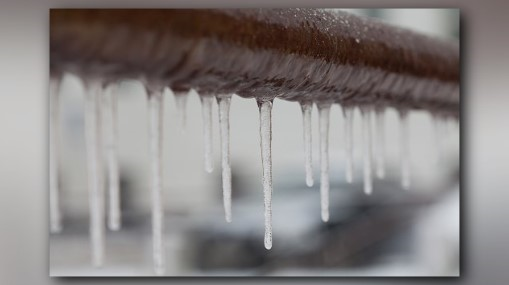Preventing Frozen Pipes in Cold Weather: Critical Tips
Preventing Frozen Pipes in Cold Weather: Critical Tips
Blog Article
This article further down relating to How to prepare your home plumbing for winter weather is really fascinating. Don't miss out on it.

Cold weather can ruin your pipes, specifically by freezing pipelines. Below's how to prevent it from happening and what to do if it does.
Intro
As temperature levels decrease, the danger of frozen pipelines boosts, possibly bring about expensive repair work and water damages. Comprehending just how to prevent icy pipelines is important for home owners in cold environments.
Avoidance Tips
Insulating susceptible pipes
Cover pipelines in insulation sleeves or use heat tape to secure them from freezing temperature levels. Concentrate on pipes in unheated or exterior areas of the home.
Heating methods
Maintain indoor rooms sufficiently heated up, particularly locations with pipes. Open up closet doors to permit cozy air to flow around pipelines under sinks.
Just how to recognize icy pipelines
Try to find reduced water flow from faucets, uncommon smells or sounds from pipes, and visible frost on revealed pipes.
Long-Term Solutions
Architectural changes
Think about rerouting pipes far from outside walls or unheated locations. Include extra insulation to attic rooms, cellars, and crawl spaces.
Upgrading insulation
Buy high-grade insulation for pipelines, attics, and wall surfaces. Proper insulation aids preserve consistent temperature levels and minimizes the risk of icy pipes.
Protecting Outside Plumbing
Garden tubes and outside taps
Disconnect and drain pipes yard hose pipes prior to winter. Set up frost-proof faucets or cover outdoor taps with shielded caps.
Understanding Frozen Pipelines
What creates pipes to freeze?
Pipes ice up when subjected to temperature levels listed below 32 ° F (0 ° C) for prolonged durations. As water inside the pipelines freezes, it increases, putting pressure on the pipeline walls and potentially creating them to rupture.
Threats and problems
Frozen pipes can bring about water supply interruptions, building damages, and pricey fixings. Ruptured pipelines can flooding homes and trigger extensive structural damage.
Indicators of Frozen Piping
Determining frozen pipelines early can stop them from rupturing.
What to Do If Your Pipes Freeze
Immediate activities to take
If you presume icy pipelines, keep taps available to alleviate stress as the ice thaws. Utilize a hairdryer or towels soaked in warm water to thaw pipes gradually.
Conclusion
Protecting against icy pipes calls for proactive actions and quick feedbacks. By understanding the causes, signs, and preventive measures, home owners can safeguard their pipes during winter.
5 Ways to Prevent Frozen Pipes
Drain Outdoor Faucets and Disconnect Hoses
First, close the shut-off valve that controls the flow of water in the pipe to your outdoor faucet. Then, head outside to disconnect and drain your hose and open the outdoor faucet to allow the water to completely drain out of the line. Turn off the faucet when done. Finally, head back to the shut-off valve and drain the remaining water inside the pipe into a bucket or container. Additionally, if you have a home irrigation system, you should consider hiring an expert to clear the system of water each year.
Insulate Pipes
One of the best and most cost-effective methods for preventing frozen water pipes is to wrap your pipes with insulation. This is especially important for areas in your home that aren’t exposed to heat, such as an attic. We suggest using foam sleeves, which can typically be found at your local hardware store.
Keep Heat Running at 65
Your pipes are located inside your walls, and the temperature there is much colder than the rest of the house. To prevent your pipes from freezing, The Insurance Information Institute suggests that you keep your home heated to at least 65 degrees, even when traveling. You may want to invest in smart devices that can keep an eye on the temperature in your home while you’re away.
Leave Water Dripping
Moving water — even a small trickle — can prevent ice from forming inside your pipes. When freezing temps are imminent, start a drip of water from all faucets that serve exposed pipes. Leaving a few faucets running will also help relieve pressure inside the pipes and help prevent a rupture if the water inside freezes.
Open Cupboard Doors
Warm your kitchen and bathroom pipes by opening cupboards and vanities. You should also leave your interior doors ajar to help warm air circulate evenly throughout your home.
:strip_icc()/snow-outdoor-faucet-pipes-4af65d1e5e904fb1aa7bf74071fe5d89.jpg)
I'm certainly very intrigued by How To Avoid Freezing Pipes and I'm hoping you appreciated the entire blog entry. So long as you enjoyed our page if you please remember to pass it around. I love your readership.
Request Appointment Report this page